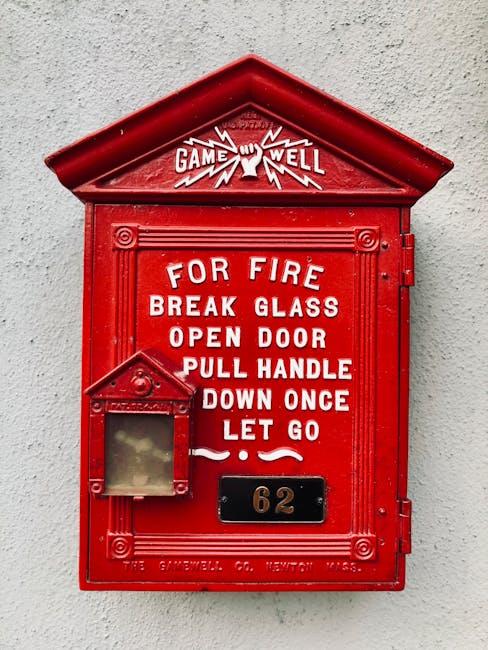Life has a knack for throwing curveballs when we least expect them. Whether it’s an unexpected car repair, a sudden medical expense, or a job loss, financial surprises can leave us scrambling to make ends meet. But what if there was a way to cushion the blow and weather these storms with a bit more ease? Enter the humble yet powerful emergency fund. Often dismissed as a luxury reserved for those with disposable income, an emergency fund can actually be a lifeline for anyone—even those juggling bills on a tight budget. In this article, we’ll explore innovative and realistic strategies to build up your emergency fund, even when every dollar seems to be spoken for. So, take a deep breath, and let’s embark on the journey to financial resilience together.
Understanding the Importance of an Emergency Fund
An emergency fund acts as a financial safety net, providing stability during unforeseen circumstances. Whether facing sudden job loss, unexpected medical bills, or urgent home repairs, having dedicated savings can prevent a crisis from escalating into a long-term financial setback. Rather than relying on high-interest credit cards or loans, which can compound financial stress, an emergency fund offers a cushion that allows for more prudent decision-making during stressful times. The peace of mind that comes with knowing you have funds set aside for emergencies cannot be overstated—it’s a fundamental pillar of financial security.
On a tight budget, building an emergency fund might seem daunting, but every small contribution counts. Begin by identifying and curbing non-essential expenses. Simple lifestyle changes, such as cooking at home more often or canceling unused subscriptions, can make a significant difference. Consider the following tips:
- Set modest initial goals, such as saving $500, before aiming for larger amounts.
- Utilize automatic transfers to ensure consistent savings without the temptation to spend.
- Take advantage of rewards programs or cashback offers, redirecting those earnings into your fund.
- Look for opportunities to generate additional income, such as freelance work or selling unused items.
Sample Monthly Budget:
| Expense Category | Monthly Budget ($) |
|---|---|
| Rent/Mortgage | 800 |
| Utilities | 150 |
| Groceries | 250 |
| Transportation | 100 |
| Discretionary Spending | 100 |

Identifying Necessary Cutbacks in Expenses
When financial resources are limited, it’s crucial to scrutinize each expense meticulously to free up funds for your emergency savings. Begin by separating essential costs from discretionary ones. Essentials, like rent, utilities, and groceries, are non-negotiable, whereas discretionary expenses such as dining out, subscriptions, and entertainment can often be trimmed down or temporarily eliminated. Create a detailed list of all your monthly expenditures to identify where cutbacks can most effectively be made.
- Consider canceling or downgrading subscription services.
- Reduce dining out by preparing meals at home.
- Switch to a more affordable grocery store or seek out sales and discounts.
- Shop for generic brands rather than name brands.
- Limit impulse purchases by planning your shopping trips and making lists.
For even clearer insight, reevaluate your spending across different categories by using a simple table:
| Category | Current Monthly Spending | Proposed Reduction |
|---|---|---|
| Dining Out | $200 | $50 |
| Subscriptions | $100 | $30 |
| Groceries | $400 | $80 |
| Entertainment | $150 | $50 |

Strategies for Increasing Income Streams
Developing multiple sources of income can provide a security blanket while you’re establishing an emergency fund. Here are some inventive strategies to help diversify your earnings:
- Freelancing: Platforms like Upwork and Fiverr offer opportunities to monetize your skills on a flexible schedule. Services can range from graphic design and writing to virtual assistance.
- Passive Income: Consider low-maintenance ventures like investing in dividend stocks, renting out property on Airbnb, or creating a blog that generates ad revenue.
- Gig Economy: Part-time opportunities such as ridesharing with Uber or delivering groceries with Instacart can supplement your primary income without a long-term commitment.
Ensuring that your side hustles and supplementary income streams align with your lifestyle can keep you motivated and financially secure. Here’s a quick comparison of different income strategies:
| Strategy | Flexibility | Initial Investment |
|---|---|---|
| Freelancing | High | Low |
| Dividend Stocks | Medium | Medium |
| Gig Economy | High | Very Low |

Creating a Realistic Savings Plan
Crafting a savings strategy demands sensible goals and disciplined execution. Given the constraints of a tight budget, identifying non-essential expenditures can unlock hidden potential. Start by scrutinizing your monthly outflows, pinpointing areas where cuts are feasible. Simple lifestyle tweaks such as brewing your own coffee, opting for home-cooked meals, and choosing budget-friendly entertainment can surprisingly accumulate considerable savings over time.
To make this process more tangible, categorize your spending and utilize a table to track it effectively:
| Category | Monthly Budget | Actual Spending | Potential Savings |
|---|---|---|---|
| Groceries | $300 | $250 | $50 |
| Dining Out | $100 | $75 | $25 |
| Entertainment | $150 | $100 | $50 |
Once you identify where you can realistically save, redirect those funds toward your emergency fund. Use visual aids like savings trackers or mobile apps to stay motivated and ensure consistency. Making small, regular contributions is key—it fosters a sense of accomplishment and steadily builds your financial cushion. Embrace and embody thriftiness without compromising your quality of life.
Q&A
Q: Why is building an emergency fund important?
A: Having an emergency fund ensures you have a financial safety net in place for unexpected expenses, helping you avoid debt and financial stress.
Q: How much should I aim to save in an emergency fund?
A: Financial experts recommend saving at least 3-6 months’ worth of living expenses in your emergency fund, but even a small amount can make a big difference in a crisis.
Q: How can I save money on a tight budget?
A: Look for areas where you can cut back on expenses, such as dining out less, canceling unused subscriptions, and shopping for deals on groceries.
Q: What are some creative ways to increase my savings?
A: Try selling items you no longer need, picking up a side job or freelance work, or participating in cash-back programs to boost your savings.
Q: How can I stay motivated to continue building my emergency fund?
A: Set specific savings goals, track your progress, and celebrate small milestones along the way to stay motivated and focused on your financial goals.
In Conclusion
As you navigate the waters of financial planning, remember that building an emergency fund is like creating a safety net for yourself. It may seem daunting, especially on a tight budget, but with determination and discipline, you can make it happen. Start small, stay consistent, and watch your emergency fund grow over time. By setting this foundation, you’ll be prepared for any unexpected expenses that come your way, giving yourself peace of mind and financial security. So go forth and start building your emergency fund – your future self will thank you.



[…] sustainable practices in your everyday routine is by embracing simple green habits. Start by making small changes that can reduce waste and save resources. For example, bring reusable bags when you […]
[…] your way and you suddenly need cash, like, yesterday? Whether it’s your car breaking down, an unexpected medical bill, or even a job layoff, these financial emergencies can seriously stress you out. But what if you […]